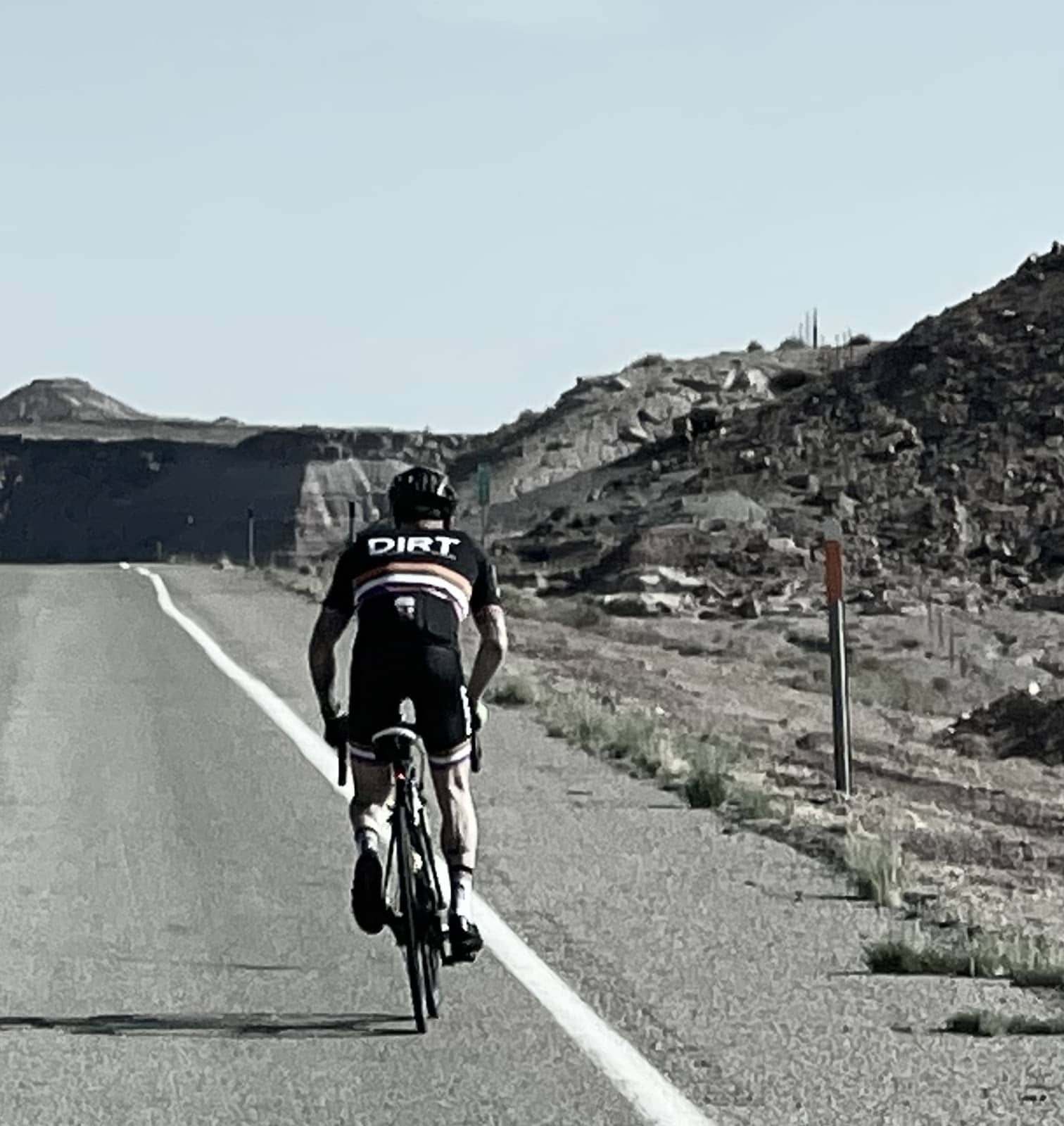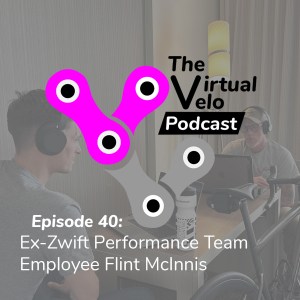- October 12, 2021
- One Comment
A dynamic cycling cool-down is as important as a proper warm-up in optimizing performance and priming the system for your next race or workout.
It may be tempting to climb out of the saddle as soon as you hit your mileage goal or as the race result scrolls across your monitor, especially when a few short moments earlier your legs were telling your mind that they couldn’t go a second longer. What, no cycling cool-down?
The performance coaching community widely believes that an active cycling cool-down is effective for promoting post-exercise recovery. The thought that the physical and psychological effects allow athletes to perform better during subsequent training sessions or events explains why it is the best-known intervention for post-ride recovery.
The implications for the virtual cyclist include the relatively high temperature and humidity of the exercise environment and lack of dynamic mobility and changes in position afforded by most trainer setups.
The current research-based evidence is conflicting but may explain the benefits of a dynamic cycling cool-down compared with other passive cool-down modalities. Maybe as important as a Proper Warm-Up as this recent ZOM post Warm Up Essentials For Cycling Success suggests.

The short-term benefits of a cycling cool-down to sports performance include:
Removal of Metabolic By-Products
High-intensity exercise leads to the accumulation of metabolic by-products, which may limit performance. Excessive accumulation of lactate, or lactic acid, has been associated with fatigue. The reduction rate of lactate concentration in our blood and muscles is an objective indicator of recovery from exercise.
Lactic acid production increases blood and muscle pH levels through exercise-induced acidosis, which hinders neuromuscular function by reducing the metabolic enzymatic process. Therefore it is significant to consider the rates by which blood and muscle pH return to resting levels.
An active cycling cool-down leads to faster removal of blood lactate when the intensity of the exercise is low to moderate. In addition, a dynamic cool-down leads to a more rapid decrease in pH to resting levels.
Delayed-Onset Muscle Soreness and Muscle Damage
An active cycling cool-down increases blood flow and reduces the accumulation of metabolic by-products and other factors associated with muscle soreness.
A 2015 study on world-class BMX racers proved that a dynamic cool-down consisting of 2 x 5 min of cycling at 70% of maximal power reduced muscle soreness when measured the following day.
An active cool-down causes a faster recovery of blood indicators of muscle damage. For example, a recent study of elite male athletes undertaking low-impact exercise immediately post‐competition promoted better physiological recovery as determined by the decreased blood marker creatine kinase (CK) level.
Neuromuscular Function and Muscle Contraction Time

High-intensity exercise is exceptionally fatiguing to our brain and nervous system, which impairs performance during subsequent competition. However, in several studies, there are minor positive effects of dynamic cool-down on the recovery of neuromuscular function and contraction time.
Immune System Recovery
There is a temporary depression of our immune system following high-intensity and prolonged exercise. In addition, a 2005 study suggests that active recovery reduces the decrease in circulating white blood cells after exercise.
A faster recovery can potentially protect us from infection or illness.

Cardiovascular and Respiratory Systems
The cardiovascular and respiratory systems are essential in supplying exercising muscles with blood and oxygen.
A recent study comparing cycling-based active cool-down protocols showed a significant decrease in heart rate 10 minutes following exercise performance. A dynamic recovery also leads to faster recovery in breathing rate and oxygen debt.
An active cycling cool-down restores the regular activity of our cardiovascular and respiratory systems after exercise.
Mood, Perception, and Psychological Factors
The psychological effects of high-intensity and prolonged exercise are strongly linked to the physical effects and are of significance for recovery and performance. The authors of a 2016 study suggest the superior responsiveness of subjective measures of athlete well-being over objective measures when describing training load and stress.
Of the athletes surveyed in multiple studies, most perceive an active cycling cool-down as beneficial. The reasons reported by most individuals include relaxation, socialization, and time to contemplate the event.
The proposed benefits of a dynamic cool-down popularized by the performance coaching community may provide a placebo effect. The authors of a 2013 study suggest the positive correlation between the perception of the effectiveness of a recovery routine and subsequent performance, pointing to the power the placebo effect can have.
An active cool-down provides us with a feeling of well-being and rejuvenates the mind in preparation for subsequent high-intensity efforts.

Key Tips for a Proper Cycling Cool-Down
- Perform the dynamic activity at a low to moderate intensity to facilitate the benefits while preventing fatigue.
- Only perform low impact or movements which create less stress upon your muscles and joints to prevent further muscle damage and delayed-onset muscle soreness.
- Keep the active recovery period less than 30 minutes to avoid interfering with post-exercise nutritional energy replenishment.
- Combine your active cool-down with a passive modality, like stretching, foam rolling, or compression technology to enhance the recovery benefit.
- Higher intensity efforts require longer cool-downs. Therefore, allow enough time to bring your heart rate to a resting level while still slowly turning the pedals.
Conclusion
A proper active cool-down aids recovery by allowing your body to return to its pre-exercise state in a gradual and controlled manner and should be the first step in preparing for your next race or training session.
In addition to providing you the opportunity to wind down after a hard workout or race mentally, an active cool-down also prevents the shock to your system that the sudden cessation of high-intensity effort can cause.
A nice and easy short post-ride recovery session followed by a little stretching and rolling will allow you to bounce back without the mental and physical trauma that could make getting back in the saddle the next day a thing of dread.
To subscribe to the Zommunique and receive more informative and entertaining articles like this one sent directly to your inbox, click here!
Your thoughts?
What is your cool-down routine and why do you think it is important to performance and recovery? Comment below! Your fellow virtual cyclists want to know.
Semi-retired as owner and director of his private Orthopedic Physical Therapy practice after over 20 years, Chris is blessed with the freedom to pursue his passion for virtual cycling and writing. On a continual quest to give back to his bike for all the rewarding experiences and relationships it has provided him, he created a non-profit. Chris is committed to helping others with his bike through its work and the pages of his site.
In the summer of 2022, he rode 3,900 miles from San Francisco to New York to support the charity he founded, TheDIRTDadFund. His “Gain Cave” resides on the North Fork of Long Island, where he lives with his beautiful wife and is proud of his two independent children.
You will read him promoting his passion on the pages of Cycling Weekly, Cycling News, road.cc, Zwift Insider, Endurance.biz, and Bicycling. Chris is co-host of The Virtual Velo Podcast, too!













[…] Follow each phase with a dynamic cool-down and jump-start the recovery process with the tips found in this The ZOM article entitled, “A Proper Cool-Down is Essential for the Virtual Cyclist.” […]